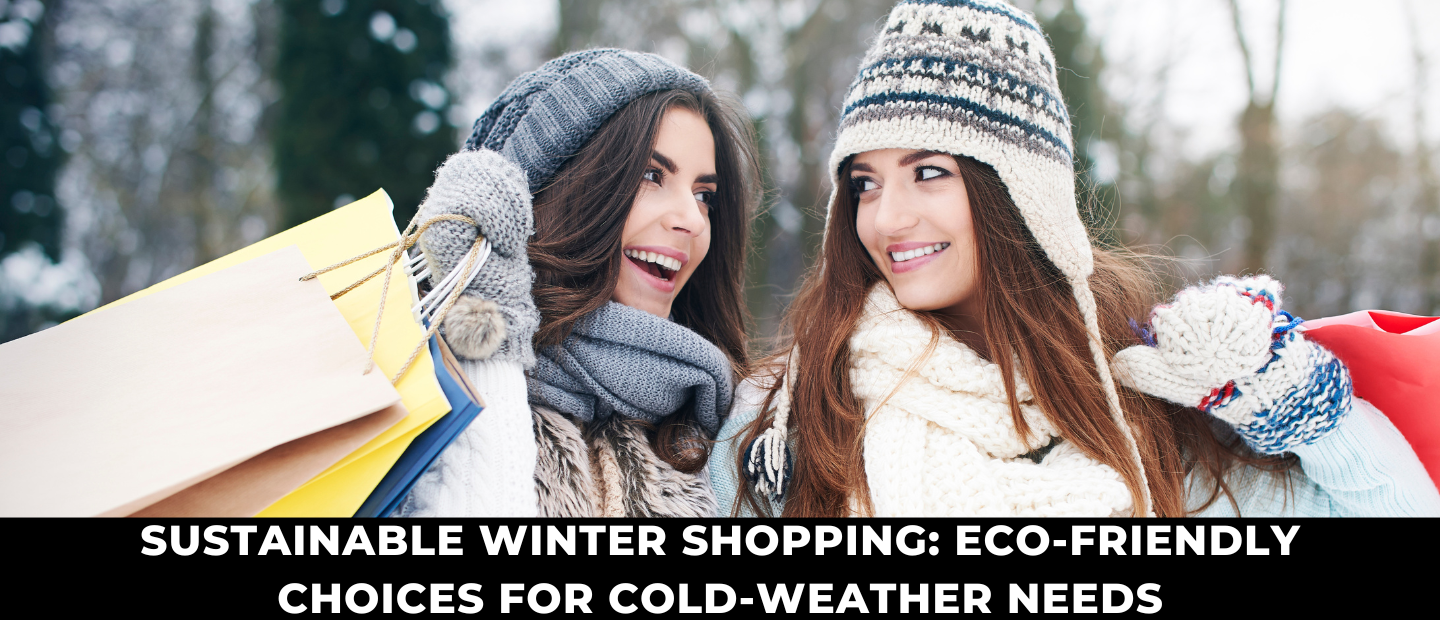As the winter season draws near, the desire for warmth and comfort becomes increasingly prominent. However, amidst the excitement of preparing for the colder months, it’s crucial to consider the environmental impact of our winter purchases. Sustainable winter shopping presents an opportunity to make eco-friendly choices that not only keep us warm but also contribute to a healthier planet.
In this blog, we will embark on a journey through sustainable winter shopping, exploring eco-friendly options for cold-weather needs. From sustainable clothing and accessories to energy-efficient home heating, we will uncover ways to embrace sustainability during the winter season.
The manufacture of textiles and apparel contributes to pollution and resource depletion, making the fashion industry in particular heavily impactful on the environment. This problem is addressed by sustainable winter apparel, which comes in a variety of forms and materials. These include hemp and organic cotton, as well as recycled and ethically sourced wool. We may reduce our environmental effects while still staying comfortable and fashionable by being aware of the advantages of certain materials and making wise decisions.
As we navigate through this blog, we will also address sustainable home heating and energy conservation, providing insights into eco-friendly heating options and practical tips for reducing energy consumption during the winter. By the end of this exploration, we hope to inspire a shift towards eco-conscious choices that make the winter season not only warm and inviting but also sustainable and environmentally responsible.
Section 1: Sustainable Winter Clothing
There are a number of environmentally friendly solutions to think about when it comes to sustainable winter clothes. There are numerous options to stay warm while leaving as little of an environmental impact as possible, from hemp and organic cotton to recycled fabrics and wool from ethically obtained sources. We’ll go over the advantages of different materials and offer advice on how to choose sustainably while buying winter apparel.

Section 2: Eco-Friendly Winter Accessories
To keep warm during the winter months, winter accessories like hats, gloves, and scarves are just as important as clothes. We’ll talk about cruelty-free substitutes and sustainable materials like bamboo and recycled fibers for these accessories, among other eco-friendly possibilities. We’ll also stress how crucial it is to buy winter items from companies that uphold fair-trade and ethical standards.

Section 3: Sustainable Home Heating
The impact of heating our homes in the winter can be felt on the environment. We’ll look at sustainable heating fuels, programmable thermostats, and energy-efficient space heaters as examples of environmentally responsible heating solutions. We’ll also include advice on how to reduce energy use and upgrade insulation in your home so you can stay warm while doing the least amount of damage to the environment.

Section 4: Energy Conservation Tips for Winter
Beyond clothing and home heating, there are numerous ways to conserve energy during the winter months. We’ll discuss simple yet effective strategies for reducing energy consumption, such as using natural light, optimizing heating systems, and practicing mindful energy usage. These tips will not only benefit the environment but also help save on energy costs.
we will delve into practical energy conservation tips for the winter season. From utilizing natural light to optimizing heating systems, we’ll provide actionable strategies for reducing energy consumption. These tips aim to not only minimize environmental impact but also help save on energy costs during the colder months.

Section 5: Sustainable Winter Activities
Winter is a great time to engage in outdoor activities, but it’s important to do so in an eco-friendly manner. We’ll explore sustainable winter sports gear, eco-friendly snow and ice removal methods, and tips for minimizing environmental impact while enjoying winter activities. Additionally, we’ll highlight the importance of respecting natural habitats and wildlife during winter excursions.

Conclusion:
In conclusion, sustainable winter shopping is not just about finding warmth and comfort; it’s about making choices that align with our values and contribute to a healthier planet. By opting for sustainable clothing, eco-friendly accessories, energy-efficient home heating, and mindful energy conservation, we can minimize our environmental impact while still enjoying the coziness of the winter season.
Choosing eco-friendly products throughout the winter is a step in the direction of conscientious consumption and environmental care. Realizing how our activities affect the environment around us and how they are interconnected is the key. We can significantly impact energy conservation by selecting energy-efficient heating solutions, encouraging sustainable practices in the fashion sector, and forming conscientious energy-saving behaviors.
As we navigate through the winter season, let’s carry the spirit of sustainability with us. Let’s inspire others to join in the journey towards eco-conscious living, ensuring that our warmth comes with a conscience. Together, we can create a winter season that is not only warm and inviting but also sustainable and environmentally responsible. Our choices matter, and by making eco-friendly decisions, we can contribute to a brighter, greener future for generations to come. Explore more – https://sabezy.com/


